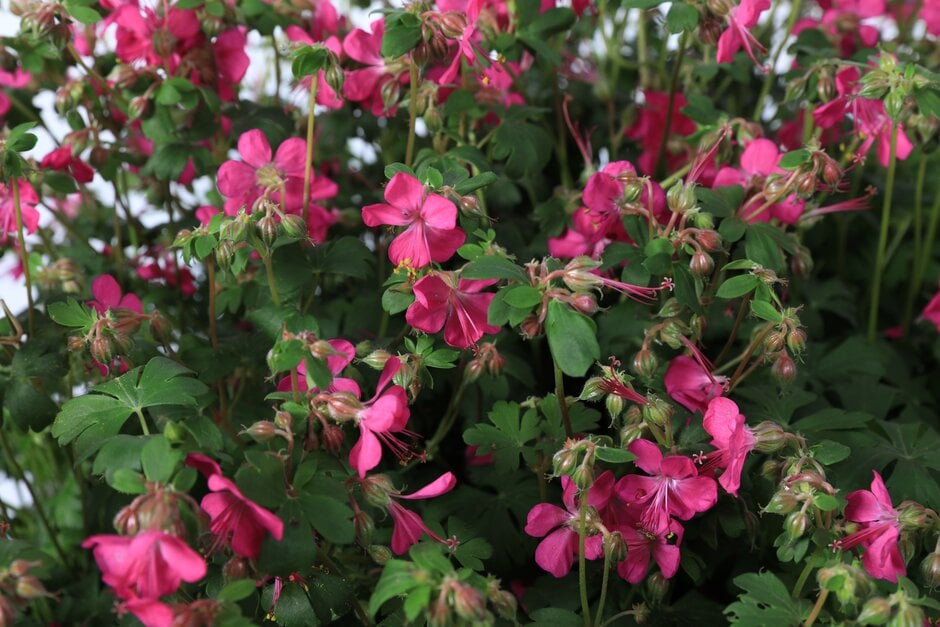Geranium × cantabrigiense 'Intense'
cranesbill 'Intense'
A compact, clump-forming semi-evergreen herbaceous perennial producing stems to 25cm high and green foliage which turns to red in autumn. Clusters of small, bright pink flowers are produced above the foliage from June to September. Ideal for ground cover
Size
Ultimate height
0.1–0.5 metresTime to ultimate height
2–5 yearsUltimate spread
0.1–0.5 metresGrowing conditions
Moisture
Moist but well–drained, Well–drainedpH
Acid, Alkaline, NeutralColour & scent
| Stem | Flower | Foliage | Fruit | |
| Spring | Green | |||
|---|---|---|---|---|
| Summer | Pink | Green | ||
| Autumn | Pink | Red | ||
| Winter | Red |
Position
- Full sun
- Partial shade
Aspect
East–facing or South–facing or West–facing
Exposure
Exposed or Sheltered Hardiness
H7Botanical details
- Family
- Geraniaceae
- Native to GB / Ireland
- No
- Foliage
- Semi evergreen
- Habit
- Clump forming, Matforming
- Genus
Geranium can be annuals, biennials and perennials, herbaceous or evergreen, with rounded, usually palmately lobed or divided leaves, and lax inflorescences of rounded, 5-petalled flowers
- Name status
Unresolved
How to grow
Cultivation
Grows best in well-drained soil and a position in full sun or partial shade
Propagation
Propagate by division in spring or propagate by basal cuttings in early to mid spring and root with bottom heat
Suggested planting locations and garden types
- City and courtyard gardens
- Cottage and informal garden
- Gravel garden
- Patio and container plants
- Wildlife gardens
- Banks and slopes
- Flower borders and beds
- Ground cover
Pruning
No pruning required. Remove flowered stems and old leaves to encourage the production of fresh leaves and flowers
Pests
May be susceptible to vine weevil, capsid bug and geranium sawfly
Diseases
May be susceptible to downy mildews and powdery mildews
Love gardening
Sign up to receive regular gardening tips, inspiration, offers and more
View our Privacy Policy
Get involved
The Royal Horticultural Society is the UK’s leading gardening charity. We aim to enrich everyone’s life through plants, and make the UK a greener and more beautiful place.

